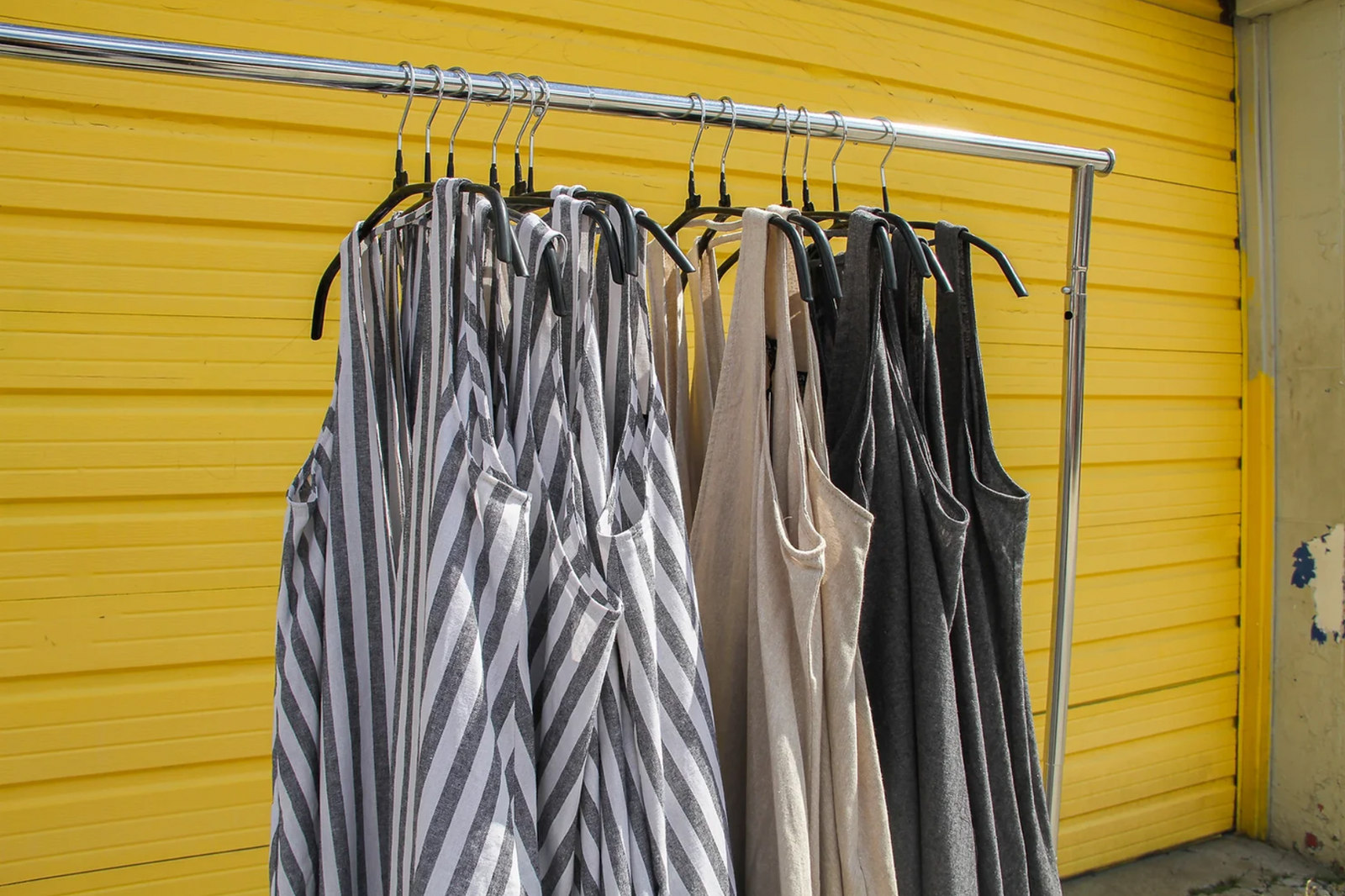Sustainable Fashion: What we're talking about when we talk about breathability

Originally posted May 31, 2021
Fabrics don’t literally inhale and exhale of course. Breathability refers to the rate that moisture moves through the fabric and evaporates, cooling the body and keeping you dry and comfortable. What makes a breathable fabric? Natural fibers! (Here's your primer on fibers in case you want to brush up!)

That’s right! Plant- and animal-based fibers breathe, petroleum-based fibers do not. Have you ever spilled your water at a fancy restaurant and tried to sop it up with your cloth napkin but you just end up pushing it around the table and onto your own lap, until a very helpful server rushes over with a handful of bar rags and soaks it all up? Restaurants use polyester napkins so they can blast away all lipstick and wine stains with gobs of bleach. That ratty bar rag is probably cotton because it’s made to absorb liquids.
Petroleum-based (AKA synthetic fibers) are oleophilic. In case your Latin isn’t as sharp as it used to be, that means “oil-loving.” The molecules create a bond with oils and since oil and water don’t mix they are also described as hydrophobic or “water-hating.” This is great news for raincoats and outdoor upholstery, bad news for underwear and sundresses. It means that the moisture from your skin can’t escape. You overheat. You feel like you’re wearing a garbage bag. Gross!
Can I tell you something else that’s gross? Oil doesn’t evaporate. It has bonded with your polyester fibers and it’s sticking around. Soap is an emulsifier that grabs oils and makes them water-soluble, but it’s riding in on a wave of water and can’t absorb deep enough into those fibers to get all the oil out. Have you ever had a vintage piece of polyester clothing that smelled like a thrift store no matter how many times you washed it? That smell is *grimace* someone else’s body oil gone rancid. Before you throw out all your beloved vintage garments in disgust there’s an easy solution: have them dry-cleaned once and then continue washing as normal. Dry cleaning should take care of the oil and save your garment but it is not, regrettably, terribly good for the environment. We just can’t win with synthetics can we?
Cellulosic (AKA plant fibers) are the exact opposite. Hydrophilic (water-loving) cellulose molecules bond with water molecules until those water molecules evaporate away. Take a look at a bath towel tomorrow morning. The thickness or “pile” is made up of hundreds of loosely twisted loops which create a massive surface area. That massive surface area allows tons of cellulose molecules to come into contact and grab onto water molecules, maximizing the absorption of your towel!
A summer dress made out of cotton or linen or, let’s say, eco-friendly Tencel, grabs onto your sweat and allows it to evaporate. Evaporation is what cools the body, since water molecules use that heat energy to transition from liquid to gas. Et voila: you’re cool and dry and looking fly.
When you wring water out of a synthetic fabric like your swimsuit (because I guarantee your swimsuit is synthetic. You really need that fabric to snap back into shape underwater and on land. Can you believe swimsuits used to be made of wool? Can you imagine the sag?) it’s because the fibers are WET as in surrounded by water, but they have not ABSORBED the water by bonding with it, you get me? Fabrics that are “moisture-wicking” are synthetics that channel moisture to the surface using the physical shape of the fiber and the weave of the fabric, keeping you dry and cool. Great! Love it! Sounds kinda like my beloved cellulosic fabrics doesn’t it?
Nope not good enough! Special technical fabrics may keep you cool and dry, but oil and synthetic fibers breed bacteria that stink. Fabric manufacturers have even tried to address the stink with antimicrobial finishes like triclosan and silver nanoparticles, but it’s possible that those could be harmful to the environment or our health. Trade in your lycra workout leggings for cotton and you’ll notice less post-workout stank (brands like Pact are doing marvelous thing with organic cotton although I wish they wouldn’t package everything in plastic). Don’t even THINK about buying those cheap sexy little polyester undies. Besides the extra bacteria smell, you’re working yourself into a yeast infection. Common plant-based fabrics for intimates include cotton, rayon, modal, and lyocell!
I choose my fabrics for Wulfka very carefully, weighing your comfort, the fabric's appearance, and its impact on the environment.




